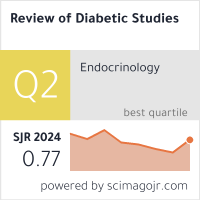The Role Of Pharmacists In Optimizing Polypharmacy Management Among Older Adults: A Systematic Review
DOI:
https://doi.org/10.70082/4k2jyr34Abstract
Polypharmacy among older adults presents one of the most complex challenges in modern healthcare, directly impacting patient safety, therapeutic efficacy, and healthcare costs. As populations age and multimorbidity becomes the norm, traditional, physician-centered medication management models have proven insufficient to mitigate the escalating risks of adverse drug events, hospital readmissions, and reduced quality of life. This systematic review critically synthesizes current evidence on the role of pharmacists in optimizing polypharmacy management through proactive, structured interventions, including comprehensive medication reviews, deprescribing initiatives, and collaborative care models across healthcare settings. The findings reveal that while conventional medication oversight focuses primarily on prescription accuracy and adherence, it often neglects the dynamic interactions between multiple therapeutic agents and patient-specific factors such as frailty, renal function, and cognitive decline. Pharmacist-led strategies—particularly those integrating tools like the Beers Criteria, STOPP/START guidelines, and individualized deprescribing algorithms—demonstrate superior outcomes by systematically identifying and resolving medication-related problems before they escalate to clinical harm. Importantly, the success of these interventions is strongly mediated by interprofessional collaboration, continuity of care, and supportive health-system structures, including access to integrated electronic health records and decision-support systems. Therefore, the most effective approach to polypharmacy management is a multidisciplinary one, wherein pharmacists act not merely as dispensers but as integral members of the clinical decision-making team. Embedding pharmacist-led medication optimization into geriatric care pathways reframes pharmacotherapy from a reactive corrective process into a proactive, patient-centered practice essential to promoting safe aging, reducing healthcare burden, and enhancing therapeutic value across the continuum of care.
Downloads
Published
Issue
Section
License

This work is licensed under a Creative Commons Attribution-ShareAlike 4.0 International License.


